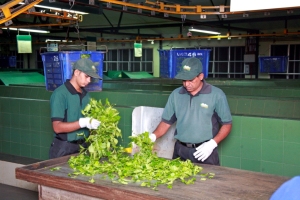Tea pluckers in Sri Lanka

Up until the late nineteenth century, Ceylon was producing coffee, not tea. But the conversion began in 1869 when a parasitic fungus that attacked the coffee plants started spreading across the island. The former Dutch and now British occupiers had been experimenting with tea plants they brought to the island and the coffee blight prompted them to convert land to commercial tea production in place of coffee. British demand was so high for these new teas that by 1900 there were over 300,000 acres of tea planted on the tiny island.

We could get very long-winded and annoyingly academic if we wanted to start listing all the nuances and exceptions within that definition, but it’s more important to note that the grading system is not necessarily a judgment on quality, but rather a categorization of size and appearance.
Though it is tiny in size (approximately the size of West Virginia), Sri Lanka is the fourth largest tea producer in the world, at over 325,000 metric tons per year. Part of this is attributable to its warm, lush, tropical environment that prevents the bushes from going into dormancy. This allows the plants to be picked year round, with some areas experiencing fairly dramatic seasonal variation. Because of the year-round growth, Ceylon teas are not grouped into 1st or 2nd flushes like Indian teas nor have anything similar to the spring tea distinction in China. However, the plants are rested periodically by heavily pruning them back to maintain quality and longevity (the plants can stay productive for approximately 40 years, give or take depending on the region).

Though its tea history is relatively short, Sri Lanka is always singled out for its commitment to quality. In the 90’s and early 2000’s, Africa and even a significant portion of India focused on producing more tea instead of great tea. Sri Lanka resisted this trend. Ceylon black teas are consistently some of the finest in world and deserve the attention of anyone with even a casual interest tea.


